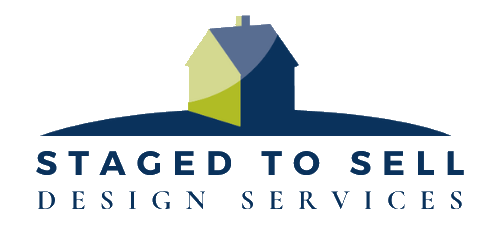Let's have 'The Talk'....
Let's have 'The Talk'....
...about where your staging furniture comes from!
It's a subject most home stagers don't want to discuss because just like the other 'talk'...it might be awkward and they don't want to tell you the embarrassing details.
People who’ve had bad experiences with home stagers learn it’s very important to ask direct questions about the stager’s inventory. After all, their furnishings are the primary tools stagers use to create an appealing home. Please, do not be shy! Here is what you need to know about their inventory...
First, do they even have the proper inventory?!
Home stagers can and do use what is available to them for each job they take. If their inventory is limited, you will likely end up with a final staging that is unattractive. For example, combining southwestern architecture with modern furnishings is a visual disconnect and will confuse and repel home buyers. You do not need to be an interior designer to notice when design elements are ‘off’. If a stager brings in a little bit of everything, using different styles for each room, that is unacceptable. Unfortunately, it happens a lot!
Next, where do they get their materials?
Very few stagers and staging companies will volunteer this information and you may encounter some hesitation in their answer. Verify that the stagers own their materials and that they do not rent from third-party rental companies. If they do use materials from rental companies, ask how the staging furniture has been used in the past. If they don't know or won't say, or if it has been lived upon, you should know this in advance. Honestly, if you wanted to use old furnishings, wouldn’t you just use your own?! Used furniture simply cannot convey a fresh, model-like appearance.
Then ask, do they rent out their furniture to other stagers? Or to end users who will live on their furnishings?
Remember, you are trying to find out if their materials have ever been lived upon, even ‘slightly’. Almost all used materials give off a sad, tired appearance. Or worse, they may contain contaminants like mold, bed bugs, body fluids and other unwelcome toxins.
Finally, ask where they store their materials.
Determine if materials are stored in the stager's personal garage or home (e.g. next to their family car and the cat food-NOT kidding) or in a shared warehouse space with other products, or in a warehouse containing used furniture. Furnishings kept in these types of facilities have the potential to contaminate your property, and damage your potential sale far more than helping it.
Staged To Sell Design Services Scottsdale, AZ, Home Staging
Why Stage Your Home?
Staging homes for sale have been part of the real estate business for decades. Professional home staging makes properties appeal to potential buyers. A survey conducted by the National Association of Realtors concludes that agents believe staging can increase the asking and final sale price up to 15%. Home staging may not always significantly increase the closing price on a home, but it benefits the seller by shortening the length of time a house is on the market.
Employ Professionals
The awareness of the value of professional home staging is increasing so be sure to work with Realtors and Home Stagers who understand how to use staging and what it can do for the sale when it goes on the market. An informed Realtor will recommend the steps to take in the sale of your home and this includes connecting you with a reputable home stager. The money spent on staging will help shorten the market time and will likely increase net sale proceeds.
Download our exclusive, FREE Pre-Showing Checklist and always be ready when agents arrive!

Luxury Master Bedroom, Home Staging
Staged To Sell Design Services is a full-service home staging company established in 2013 in Scottsdale, Arizona. They have their own 5000 square foot warehouse and have completed over 1400 professional home stages. Their clients say they are the #1 staging company in Arizona. Everything Staged To Sell Design Services uses in staging is purchased directly from manufacturers; they guarantee it has never been lived upon. They know that’s the only way to ensure a fresh, up-to-date, ‘model home’ appearance in home staging.


